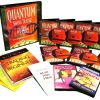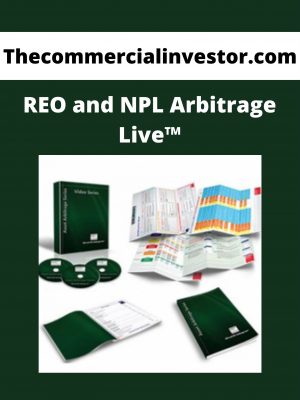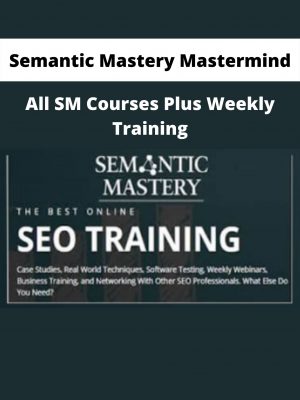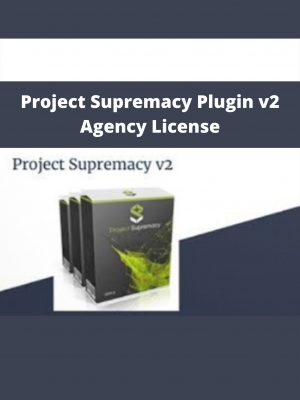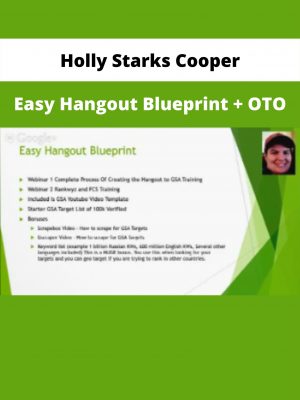The Complete Python for Beginner-Master Python from scratch
$195 Original price was: $195.$40Current price is: $40.
Shopping Instructions:
- DISCOUNT 15% : SHOP15
- Product Delivery: Within 1 – 12 hours after purchase.
Python is being widely used in the data science domain and hence it is important to learn how to use Python to analyse data. File size: 0.98 GB
The Complete Python for Beginner-Master Python from scratch
What you’ll learn
Learn the latest version of Python i.e Python 3
Understand & learn each and every Python concept.
Learn how to automate social media posts using Selenium
Make Web-Applications using Python.
Make GUI based Applications in Python using Tkinter
Learn how to make full-stack web apps using Python and Django
Learn how to process images & videos using OpenCV
Learn how to make your own web-scraping tool using Python
Build database oriented desktop apps with Python, PostgreSQL & Tkinter.
Understand all Django concepts
Understand all Flask Concepts
Learn how to perform data analysis using Python
Learn object oriented programming in Python
Course content
Expand all 311 lectures29:00:48
–Introduction
02:58
Introduction To The Course
Preview
02:58
–Basic Python Concepts
01:03:39
Installing Python And PyCharm
06:04
Hello World Program In Python
08:06
Some other mathematical operations in Python
06:14
Strings In Python
05:00
Accepting input from the user in Python
05:06
Performing operations on a string in Python
05:25
Variables in Python
06:33
In place operators in Python.
06:28
Writing our very first program in PyCharm
04:27
Coding Challenge Part 1
07:31
Quiz For Section 1:
5 questions
Notes & Summary For Section 1
02:45
–Control Structures In Python
01:15:07
If statement in Python
08:32
Elif statement in Python
05:37
Introduction to lists in Python
06:17
List operations in Python
08:32
List functions in Python
07:20
Range function in Python
05:10
Code reuse and functions in Python
07:38
For Loop in Python
08:35
Boolean logic in Python
05:57
While loop in Python
05:48
Quiz For Section 2:
5 questions
Coding challenge 2
00:14
Coding challenge 2 solution
00:05
Coding challenge 3
00:11
Coding challenge 3 solution
00:08
Notes & Summary For Section 2
05:02
–Functions & Modules In Python
22:19
Passing arguments to functions in Python
06:28
Making function return value in Python
04:37
Passing functions as arguments in Python
05:19
Modules in Python
04:28
Quiz For Section 3:
3 questions
Coding challenge 4
00:16
Coding challenge 4 solution
00:09
Notes & Summary For Section 3
01:02
–Exception Handling & File Handling In Python
38:32
Errors & exceptions in Python
07:59
Exception handling in Python
04:54
Finally block
03:23
File handling
06:43
Reading data from file
04:16
Adding data to the file
06:04
Appending to a file
02:01
Quiz For Section 4:
4 questions
Coding challenge 5
00:07
Coding challenge 5 solution
00:11
Coding challenge 6
00:13
Coding challenge 6 solution
00:09
Notes & Summary For Section 4
02:30
–Some More Types In Python
45:08
Dictionaries
07:10
Dictionary Functions
05:37
Tuples
03:41
List Slicing
05:19
List Comprehension
05:06
String formatting
05:35
String functions
07:57
Numeric functions
02:45
Quiz For Section 5:
2 questions
Coding challenge 7
00:10
Coding challenge 7 solution
00:08
Coding challenge 8
00:05
Coding challenge 8 solution
00:05
Notes & Summary For Section 5
01:28
–Functional Programming In Python
31:12
Functional programming
06:34
Lambdas in Python
05:06
Map in Python
06:06
Filters in Python
04:00
Generators in Python
06:28
Coding challenge 9
00:19
Coding challenge 9 solution
00:10
Coding challenge 10
00:04
Coding challenge 10 solution
00:02
Coding challenge 11
00:13
Coding challenge 11 solution
00:08
Notes & Summary For Section 6
02:00
–Object Oriented Programming In Python
01:38:13
Introduction To Object Oriented Programming, Classes & Objects
05:18
Class Methods
03:01
Creating A Class & Defining Class Attributes
06:54
Instance Attributes & Constructor
11:11
Implementing Methods In Object Oriented Programming
07:16
Function Based vs OOP Way Of Writing Code
08:35
Inheritance
06:47
Multiple Inheritance
04:07
Multi-level Inheritance
03:21
Recursion in Python
07:07
Sets
07:56
Itertools
09:23
Operator overloading in Python
07:42
Data hiding in Python
06:29
Coding challenge 12
00:30
Coding challenge 12 solution
00:29
Coding challenge 13
00:07
Coding challenge 13 solution
00:08
Notes & Summary For Section 7
01:50
–Regular Expressions In Python
39:32
Regular expressions in Python
06:33
Search & find all
05:03
Find & replace
04:59
The dot metacharacter
03:33
Caret & dollar metacharacter
05:17
Character class
06:03
Star metacharacter
04:40
Group
03:24
–Create GUI Apps In Python Using Tkinter
01:12:12
Tkinter : Hello world program
07:09
Tkinter: Using frames
05:43
Tkinter: Grid layout
06:32
Tkinter: Self adjusting widgets
05:00
Tkinter: Handling button clicks
04:03
Tkinter: Using classes
10:39
Tkinter: Using drop downs
11:41
Tkinter: Toolbar
08:03
Tkinter: Making Status Bar
03:25
Tkinter: Message box
04:36
Tkinter Drawing
05:21
16 more sections
Requirements
No coding, or technical knowledge required.
A computer with internet connection.
No paid tools are required as the tools required for this course are free.
Passion and curiosity to learn someting new.
Description
The Complete Python Masterclass: Learn Python From Scratch
Here Is What You Get By Enrolling In This Course:
Word-By-Word Explanation: In the entire course, I explain each line of code, without skipping a single line of code.
Awesome Quality Content: Over 29+ hours of HD(1080p) Videos.
Well Structured & Easy To Learn: Course has been specially designed to make it easy for the students to learn Python, Django, Data Analysis, Flask, Tkinter, OpenCV, Desktop App development with PostgreSQL & Web Scraping.
24 X 7 Support: I will always be there to guide you in your journey to become Python expert.
_________________________________________________________________________
Here Is Everything You Will Learn In This Complete Course:
Get immediately download The Complete Python for Beginner-Master Python from scratch
In this hands-on course, you will learn Python right starting from scratch to the level where you can build almost anything with it, be it a fully functional database oriented web application or an automation tool.
This course will teach you Python right from scratch from a very basic level and will gradually move you towards more advanced topics.
We not just cover all the Python basics but also the most popular Python libraries such as Django, Flask, Tkinter & Selenium.
The Complete Course is divided into 11 Major sections.
Here is a brief description of what you will learn in each section.
Section 1: Python.
This section covers all the basics of Python, starting right from installing the required tools to covering topics like mathematical operators, strings, accepting user input, string operations, variables, conditionals like if, elif, control structures such as while & for loop, functions, modules & packages, lists, file handling, OOP in Python, regular expressions. Almost every basic Python concept is covered in this section.
Section 2: Make GUI In Python Using Tkinter.
Once done with the basics, we know learn the Tkinter library which allows us to create desktop based applications with Python. We learn how to create GUI apps using Tkinter & Python and also build a fully functional Desktop app i.e a calculator.
Section 3: Making Database Oriented Desktop Apps With PostgreSQL.
Making a simple desktop app alone isn’t sufficient, it needs a backend database to store some data. To do the same we learn how to connect our desktop apps to the backend. In this section we build a student management system software using Python, Tkinter to design the GUI & PostgreSQL database to store the data for our application in the backend.
Section 4: Data Analysis.
Python is being widely used in the data science domain and hence it is important to learn how to use Python to analyse data. Hence in this section we learn how to use the tools and techniques used to perform data analysis. We start off by learning the Pandas library which is used to perform data analysis and all the basic concepts like DataFrames, Reindexing, Indexing, Broadcasting and also learn how to perform data plotting and visualisation with the Matplotlib library.
Section 5: Python Web Framework Django.
This section will teach you how to build full-stack web applications with Python & Django. Django is one of the most popular web frameworks for Python and is used to program the back-end side of out web app. In this section we will learn Django right from basics and will build a simple book store web application. We will learn how to create models, how to route URL requests, how to create different views for our web app, how to integrate HTML templates and a lot more.
Section 6: Python Web Framework Flask.
Flask is a micro web framework for Python used to build simpler web apps. If you want to develop some simple and small websites, you can do so using Flask. In this section we cover flask basics suck as Routing, Dynamic URLs, Templates, passing data to the server & site cookies.
Section 7: REST APIs Using Django Rest Framework.
In this section we learn how to build our own REST APIs using the Django Rest Framework. If you already have a Django web app built, you can create API endpoints for it using the Django Rest Framework. In this section we will build a fully functional REST API with features such as search, filtering & authentication.
Section 8: Web Scraping in Python.
Python can also be used to crawl websites and gather data from it. In this section we learn the same, we build a web crawler which crawls up any website of our choice and gathers links from it. Web crawlers are used by many search engines to rank websites and in this section we learn how to build a smaller version of it using Python.
Section 9: Automation with Python & Selenium.
Python is widely used for automation as well, especially for testing. Selenium web driver is one such tool which has been built for automating tests but the same can be used for automating other browser based tasks as well. In this section we learn how to automate tasks using Selenium and will also build a Facebook Bot that automatically posts status for us.
Section 10: Best Practices: Writing Clean & Efficient Python Code.
To be a good Python engineer/ developer you need to know how to write clean, concise and efficient Python code. In this section we learn some of the best practice that you must follow while writing Python code so.
Section 11: Image Processing With Python & OpenCV.
Python can also be used to process and manipulate images and videos. In this section we learn how to use OpenCV library with Python to manipulate images. We learn some interesting things like capturing webcam video, tracking images from a live video, different image thresholding techniques, image blurring, averaging and Gaussain filtering.
_________________________________________________________________________
So let’s begin the journey of becoming an expert in Python.
In addition to the Udemy 30-day money back guarantee, you have my personal guarantee that you will love what you learn in this course. If you ever have any questions please feel free to message me directly and I will do my best to get back to you as soon as possible!
_________________________________________________________________________
Make sure to enrol in the course before the price changes.
Take yourself one step closer towards becoming a professional Python developer by clicking the “take this course button” now!
Join the journey.
Sincerely,
Ashutosh Pawar
Who this course is for:
Beginners who want to learn Python.
Beginners who want to learn Django.
Beginners who want to learn Flask.
Web Developers.
Students who wish to learn a new skill to develop their career.
Related products
SEO & Design Website
SEO & Design Website
SEO & Design Website
Semantic Mastery Mastermind – All SM Courses Plus Weekly Training
SEO & Design Website
SEO & Design Website
Mike Reinold & Eric Cressey – Functional Stability Training for the Upper Body
SEO & Design Website
SEO & Design Website
SEO & Design Website


